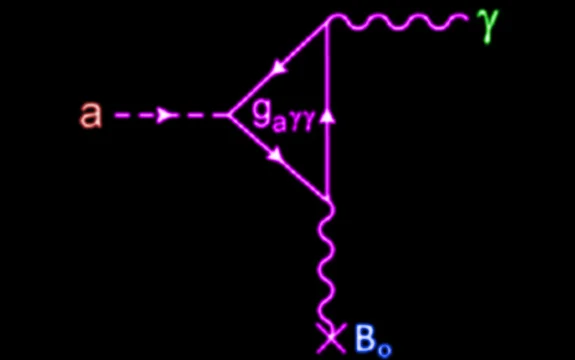Axions - the lighter alternative
Just how massive are dark matter particles? Well, to be honest, this is one of the most fundamental, and yet least defined parameters of the field - we simply do not know the mass of such a particle.
We know that dark matter exists, and that, on a universal scale, the total mass of dark matter greatly exceeds that of the ordinary (“baryonic”) matter that we can see. And we know that it interacts very weakly- if at all - with electromagnetic radiation (light, radio waves, X-rays, etc), and very weakly with baryonic matter. As to the actual mass of dark matter particles… well, we just don’t know.
When considering the possibilities for DM particles, there are two main regimes that are considered – high mass particles, called WIMPs (Weakly Interacting Massive Particles), and the much less massive WISPs (Weakly Interacting Sub-eV Particles). The second category includes a highly promising dark matter candidate, the axion.
The axion is a particle that was proposed as a result of a solution for what is known as the “strong CP problem” within quantum chromodynamics (abbreviated to “QCD”). QCD is the framework which describes the workings of matter on the subatomic scale, and includes descriptions of particles and the forces through which they interact. The strong CP problem is widely regarded as one of the greatest problems in particle physics.
It relates to the lack of an observed electric dipole moment ("EDM") for the neutron – theory predicts that the neutron could have an EDM, but it is experimentally constrained to be less than one trillionth of the predicted size. This discrepancy has puzzled physicists for decades, and the most popular solution to the problem necessitates the introduction of the new particle, which has been named the axion.
When we look at the properties that we expect this axion to have, we find that they match exactly with the expected properties of dark matter – i.e. they have mass, and a weak interaction with the standard model particles. This has lead many physicists to consider the axion a highly promising dark matter candidate.
Thus far, particles belonging to both dark matter candidate categories (high mass and low mass) are theoretical - based on our theories of subatomic physics, they are used to explain or allow certain phenomena within that theoretical framework. But, we do not yet have a definite, unambiguous experimental verification of the existence of either class of particle.
So what mass ranges are we talking about?
For WIMPs, as an example, the range of masses discussed in sensitivity plots for direct detection experiments such as SABRE and DARMA, is from around 4 GeV to 1,000 GeV in terms of energy units, or about 7.1 x 10-27 kg to 1.78 x 10-24 kg in mass units. (And, yes- these are the massive particles!)
For those current and planned WISP searches which are looking for axions, the mass range is around 2 x 10-6 eV to 2 x 10-4 eV in energy units, or 3.56 x 10-42 kg to 3.56 x 10-40 kg in terms of mass units.
So the looked-for WIMPs are about 1016 times the mass of the looked-for axions!
Two main results of this difference in mass are that there would need to be many more axions than WIMPs to account for the inferred amount of dark-matter-based mass in the universe; and that the experimental techniques required to search for each type of particle are quite different, each having its own particular requirements and challenges.
So although each type of particle is, as yet, hypothetical only, the relevant experiments are designed with reference to the behaviour and interactions that are expected of each type of particle, and each experiment pushes the limits of our techniques and technology in order to search for these most elusive, but most pervasive, particles.
The Feynman diagram for the inverse Primakoff effect. In the presence of a magnetic field (in blue), an axion (red) may convert into a photon (green). This is the basis for a number of axion dark matter searches, as will be described in a forthcoming post.

